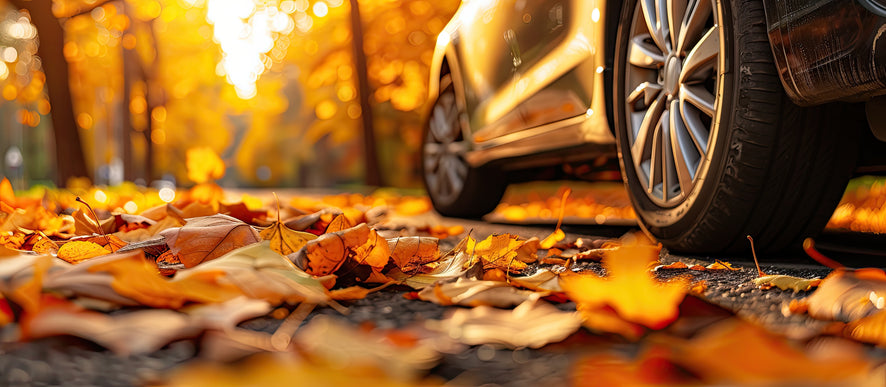
The difference between winter tires and summer tires
Now that winter is approaching, many people are wondering whether they should exchange their summer tires for winter tires. To make a well-considered choice, it is important to know the advantages and disadvantages of these tires. That is why we list the differences in detail in this blog.
We look at the following matters:
- The profile
- The rubber compound
- The braking distance and traction
- The rolling resistance
- The sound
Winter tire profile vs. summer tires
Winter tires have a coarser and deeper profile than summer tires. The tread blocks of winter tires contain horizontal, vertical and oblique grooves: the so-called sipes. At temperatures below 7 degrees Celsius, this profile deforms, so that the indentations provide multiple points of contact on the road surface. This causes the winter tire to grip onto (wet) snow, as it were. The profile of summer tires consists of large blocks that make good contact with the road surface, even at higher temperatures. They also easily drain rainwater, preventing aquaplaning. The tread depth of new winter tires is approximately 9 millimeters, that of new summer tires is 7.5. By law you must replace both types of tires from 1.6 millimeters. However, the ANWB recommends replacing summer tires from 2 millimeters and winter tires from 4 millimeters, especially if you go on a winter sports holiday by car. Read our blog post about it measure the tread depth of your tires to check whether your tires still have sufficient profile.
Rubber composition winter tires vs. summer tires
The rubber of summer tires is harder than that of winter tires. One of the advantages of this is that summer tires last longer. The rubber of summer tires is flexible enough to perform well at higher temperatures, but becomes too stiff in cold weather. At temperatures below 7 degrees Celsius, a summer tire has less tread: the part of the tire that comes into contact with the road surface. Winter tires perform better because their rubber is much softer and remains flexible enough to make sufficient contact with the road, even at low temperatures.
Difference between braking distance and traction
With a winter tire you have much more traction (or grip) on a cold or snowy road surface than with a summer tire. After all, a winter tire has more points of contact, so that it makes better contact with the road surface. This has the advantage that you accelerate more easily and steer more stable, especially in bends. You can also get up a snowy slope faster with a winter tire, if you can do that at all with a summer tire.
Traction also affects braking distance. Above 7 degrees Celsius, a summer tire has a shorter braking distance, both on a wet and dry road surface. A winter tire performs better at lower temperatures: at a speed of 100 kilometers per hour, you come to a stop 4 meters earlier with a winter tire than with a summer tire. This difference is even greater on a snow-covered road surface. At a speed of 50 kilometers per hour you will come to a stop after 25 meters with a winter tire, and only after 53 meters with a summer tire.
Difference in rolling resistance between winter tires and summer tires
Because summer tires have a smoother profile and harder rubber compound than winter tires, they experience less rolling resistance. This means you use less fuel when you drive on summer tires. Summer tires also last longer than winter tires under normal conditions. Is it colder than 7 degrees Celsius? Then summer tires wear out faster than winter tires.
Winter tire noise vs. summer tires
A tire rolling on the asphalt produces noise. Due to their difference in rubber composition, the noise production of summer tires and winter tires depends on the temperature. In cold weather, the rubber of summer tires becomes relatively hard, so that the rolling noise is higher than with a winter tire. At higher temperatures, a winter tire actually makes more noise. There are more factors that influence rolling noise, such as the quality of a tire. For example, if there is irregular wear (or sawtooth wear), a tire produces more and more noise, whether it is a summer or winter tire.
When to change to winter tires?
It is a topic that comes up every year: should you change from summer to winter tires in the autumn? And if so, when? You can read more about it in our blog about it changing to winter tires .
More blogs about car tires
You will find more articles about car tires on our blog page. For example, we discuss the question of whether it is wise to drive on winter tires in the summer. We also give you 5 tips for the correct tire pressure and advise you on the best way to inflate your car tire yourself.
Read more blogs

Runflat banden zijn een slimme oplossing voor autobezitters die meer veiligheid en...
Lees meer
It can happen to any motorist: you get into your car, drive...
Lees meer
A flat tire is very annoying, especially if it is caused by...
Lees meer